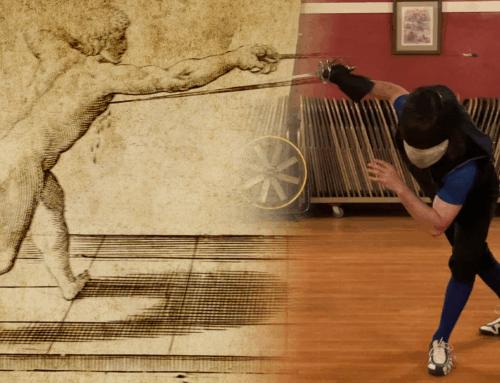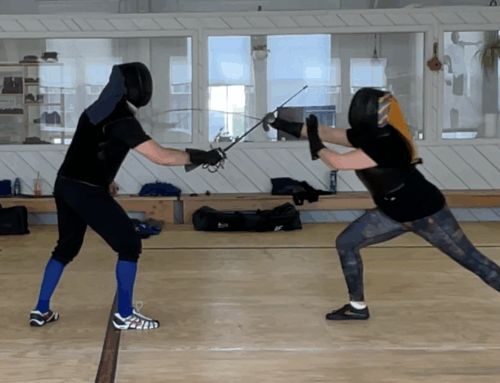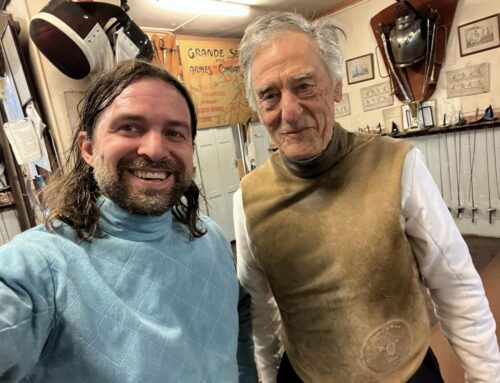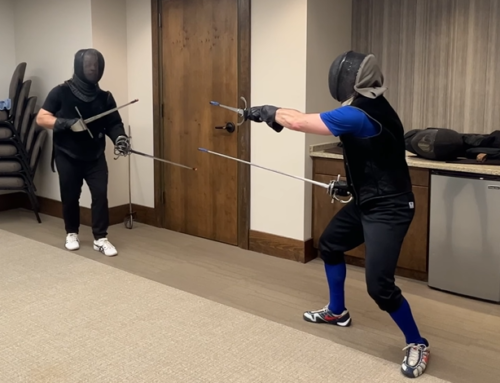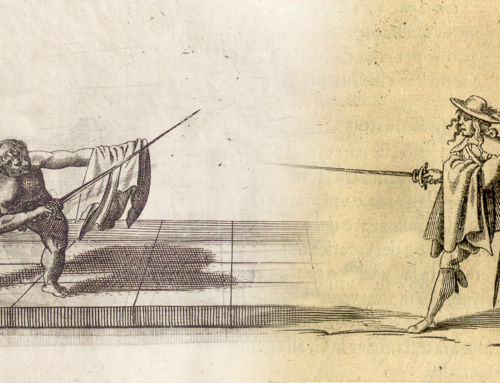Thanks to COVID-19, almost all HEMA & SCA Rapier practices and classes are digital via online streams. While it’s a huge bummer we can’t meet in person for some passes & classes, it has been great in terms of being able to learn from a bunch of different teachers from all over the community.
Of course, teaching & learning online isn’t always easy. A lot of folks are coaching from their living rooms (c’est moi!) where lighting is dicey and webcam quality & framing is even dicer. This often means it can be difficult for students to see as much as normal compared to in-person classes. There’s a lot of visual info that can get lost.
Being able to frame yourself so your students can see as much of you as possible is the first step to making sure students are able to get as much useful visual information as they can.
Another way of making online learning easier is how you dress as the coach or instructor.

By giving your coaching outfit a little thought, you can maximize the amount of visual info your students get from you.
In fencing, there’s so much we teach via visuals and demonstrating actions, we want to make sure we’re not accidently “hiding” anything. This is perhaps even more important in an online environment when 90% of students don’t have a partner to work and experiment with, and are unable to see us from multiple angles on their own.
Note: Although I’m talking specifically about dressing for an online class, I think the general ideas here also would work great for in-person classes, too. Similarly, students dressing as listed here could help instructors and coaches better see what they are doing to provide useful feedback.
Optimizing Your Outfit


In broad strokes, we want our outfit to help supplement what we’re teaching and demonstrating. We want what we wear to help facilitate to our students the angle of joints, positions of limbs, and how our bodies move (i.e., weight transfer, foot placement, etc.).
The above image comparison shows the difference between an outfit that’s built to help facilitate visual learning and one that hides that extra info. The “bad outfit” is probably a worst case scenario, but with winter just around the corner, it’s not entirely unlikely.
Do’s
- Wear fitted clothing. This will help show body form better. Clothes don’t have to be skintight and you definitely don’t need to dress like the manuals (not everyone can pull off the fig leaf look), but you outfit, ideally, should still reveal exactly where limbs and joints are.
- Break up the body. Think about dressing in a way that breaks up the body into different blocks– arms are broken out by the humerus, the forearms and hands; the legs are broken up into the thigh, shin and the feet; then there’s the torso, pelvis, and head to consider. We want to make sure students can see each of these “blocks” as easily as possible, so limbs & joints don’t blend together.
I do this by wearing my pants like breeches, so they end at the knee. This creates a distinct divide between my thigh/quads and my shins. Similarly, I usually wear short-sleeves so there’s a distinction between the humerus and forearm. A shirt that ends at the hips also helps show the line between the toros and pelvis, etc. - Vary color. Alternate the colors you use in your outfit, too. So if you wear a blue shirt, aim for different colors pants. Likewise, make sure your socks are a different color than your pants.

Don’t…
- Wear all black (or monochrome). The dark & brooding look is especially big in the HEMA world, but it makes your entire body blend together. Fine for a tournament; less useful for teaching. This makes it harder for students to see the individual limbs and body parts’ exact locations and location in relation to other parts of the body. Basically, you become just a blob of black without any distinct features.
Wearing all black makes it more likely that you’ll blend in with your background, too. Similarly, don’t wear all monochrome colors if you can help it for the same reasons — although black is perhaps the worse culprit in this category. - Wear baggy clothing. Similarly to wearing all black, wearing oversized or baggy clothing can make it difficult for students to see the exactly location of limbs or the angle of joints — such as the elbow, knee, and hips.
- Wear gloves. This is really a minor issue in the grand scheme of things, but gloves tend to be black which — like with other clothing — can make it difficult to see the fine details of the hand, especially in the SCA where gloves tend to come with large, wide cuffs.
Final Thoughts
These are just general ideas to help students get more useful visual info as easy as possible. It’s by all means not a necessity. So, if you’re not comfortable wearing fitted clothing, bright colors, etc. than don’t lose much sleep over it.
First and foremost, you want to be comfortable in your own skin & clothes, so your actual teaching doesn’t suffer. 🙂



